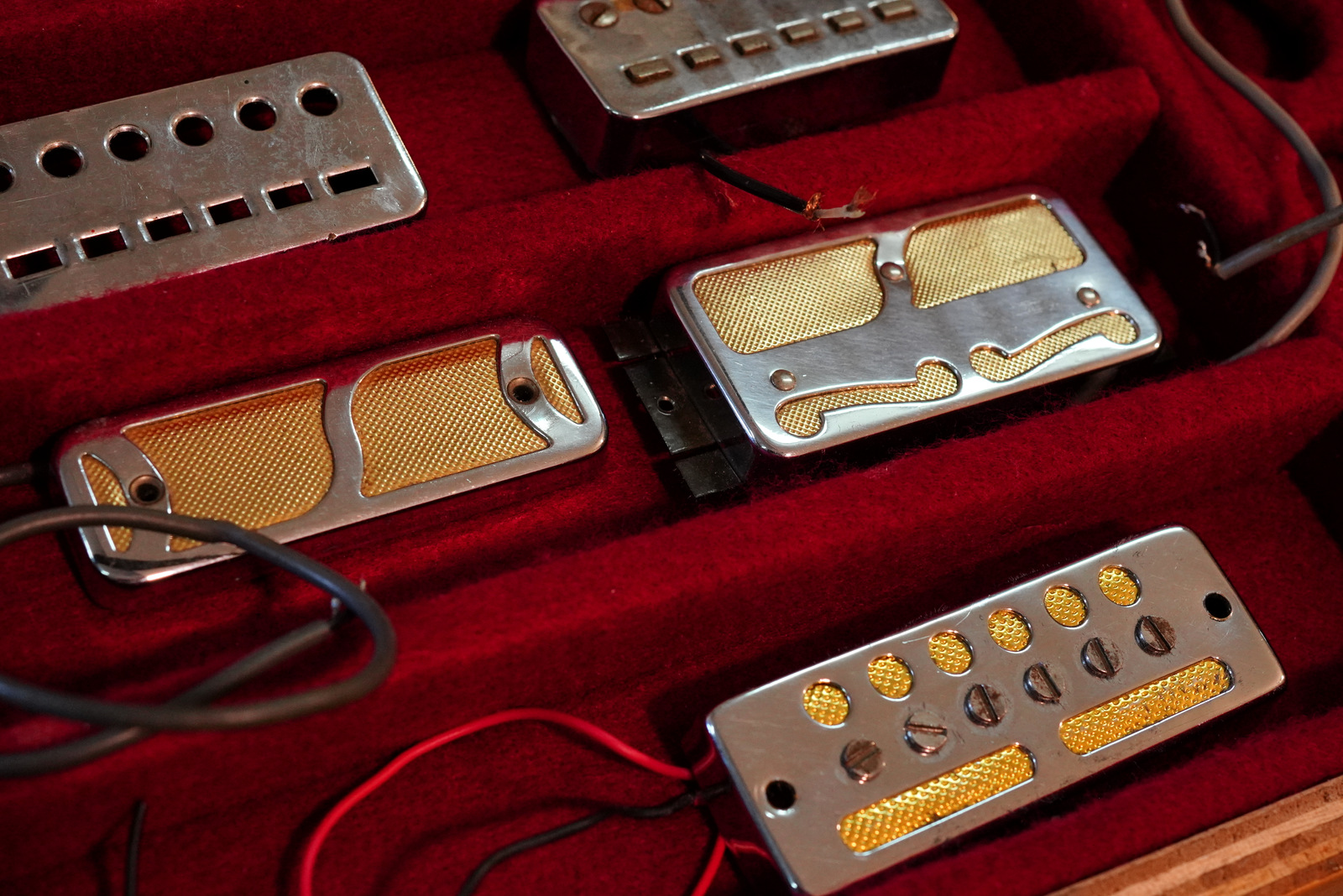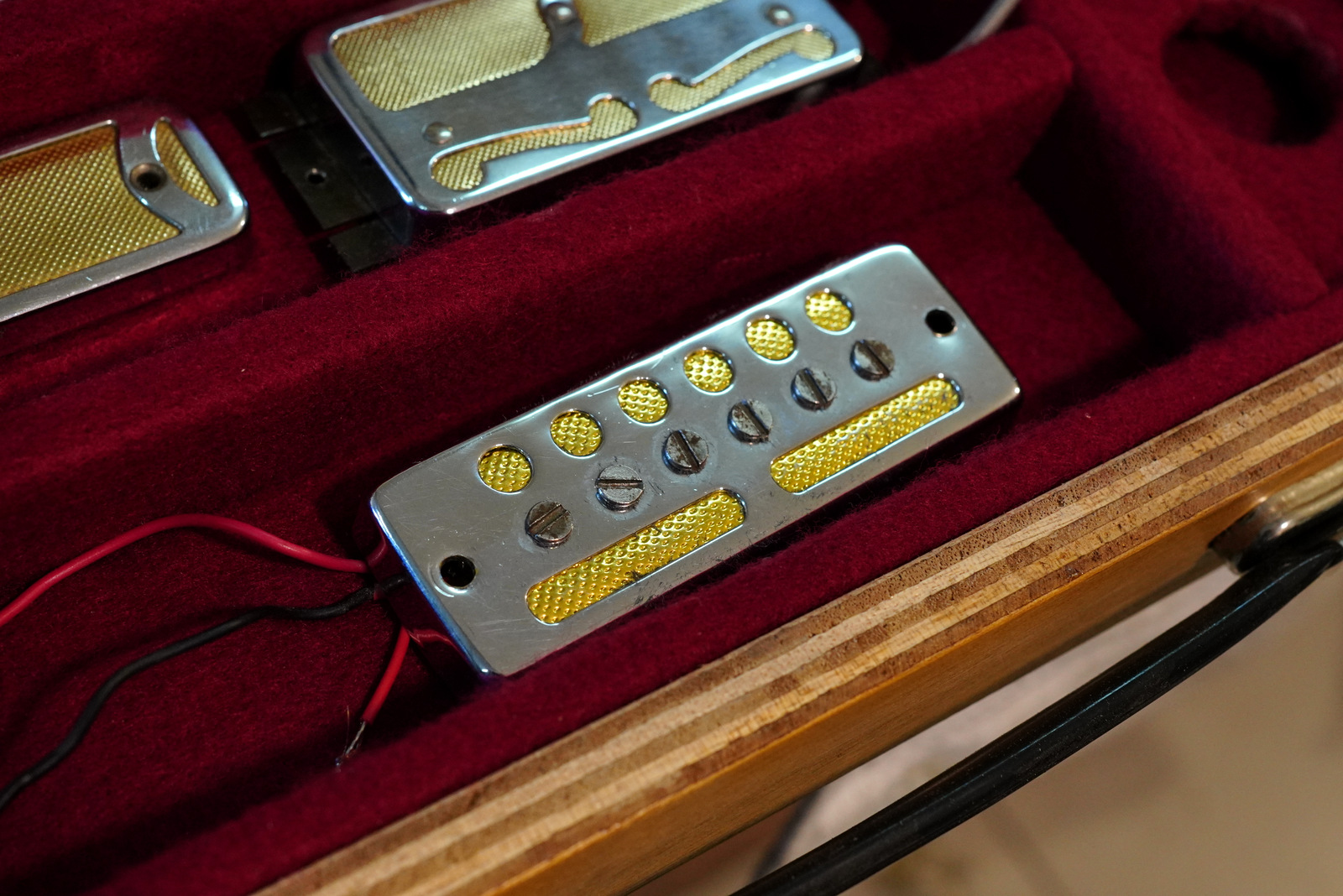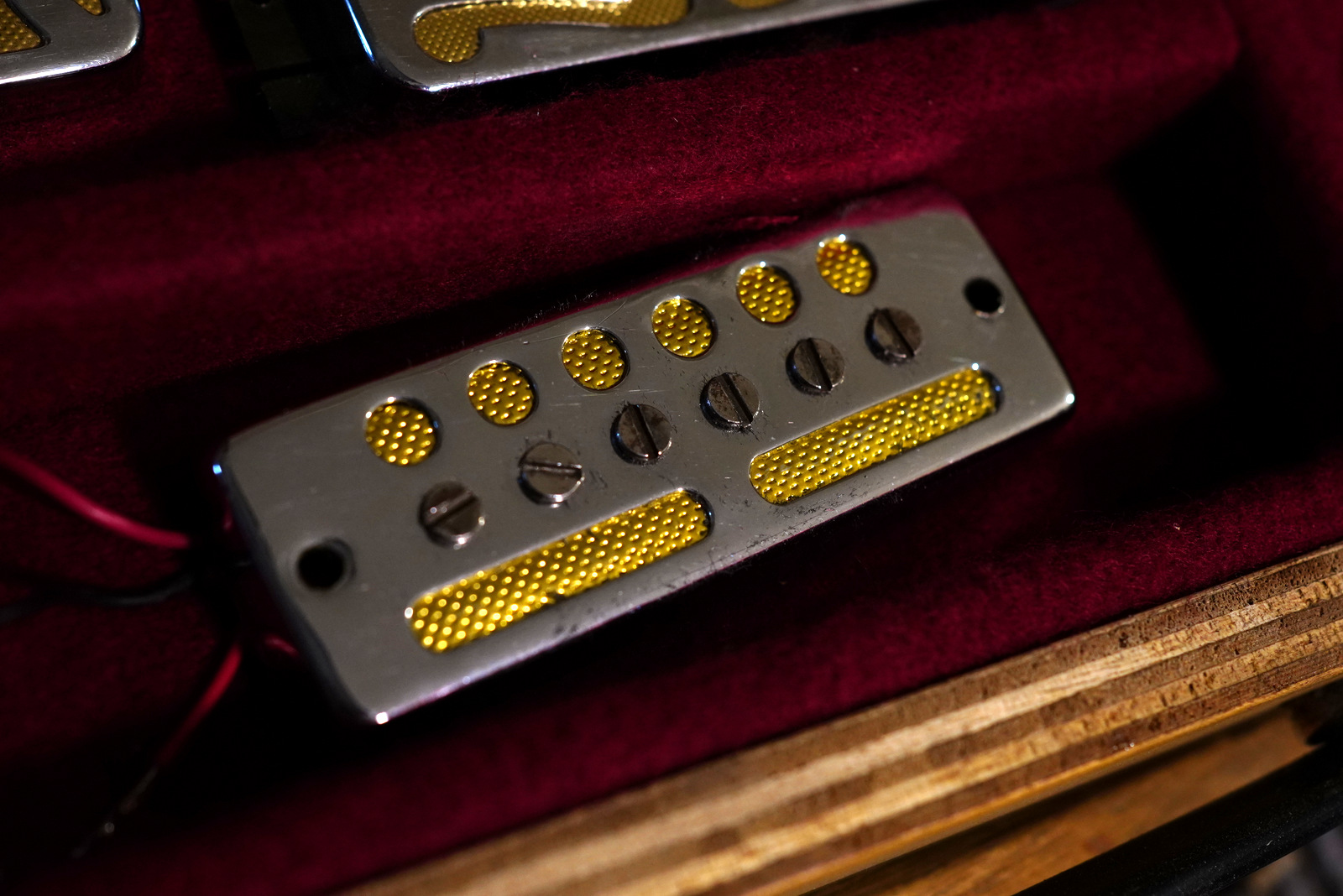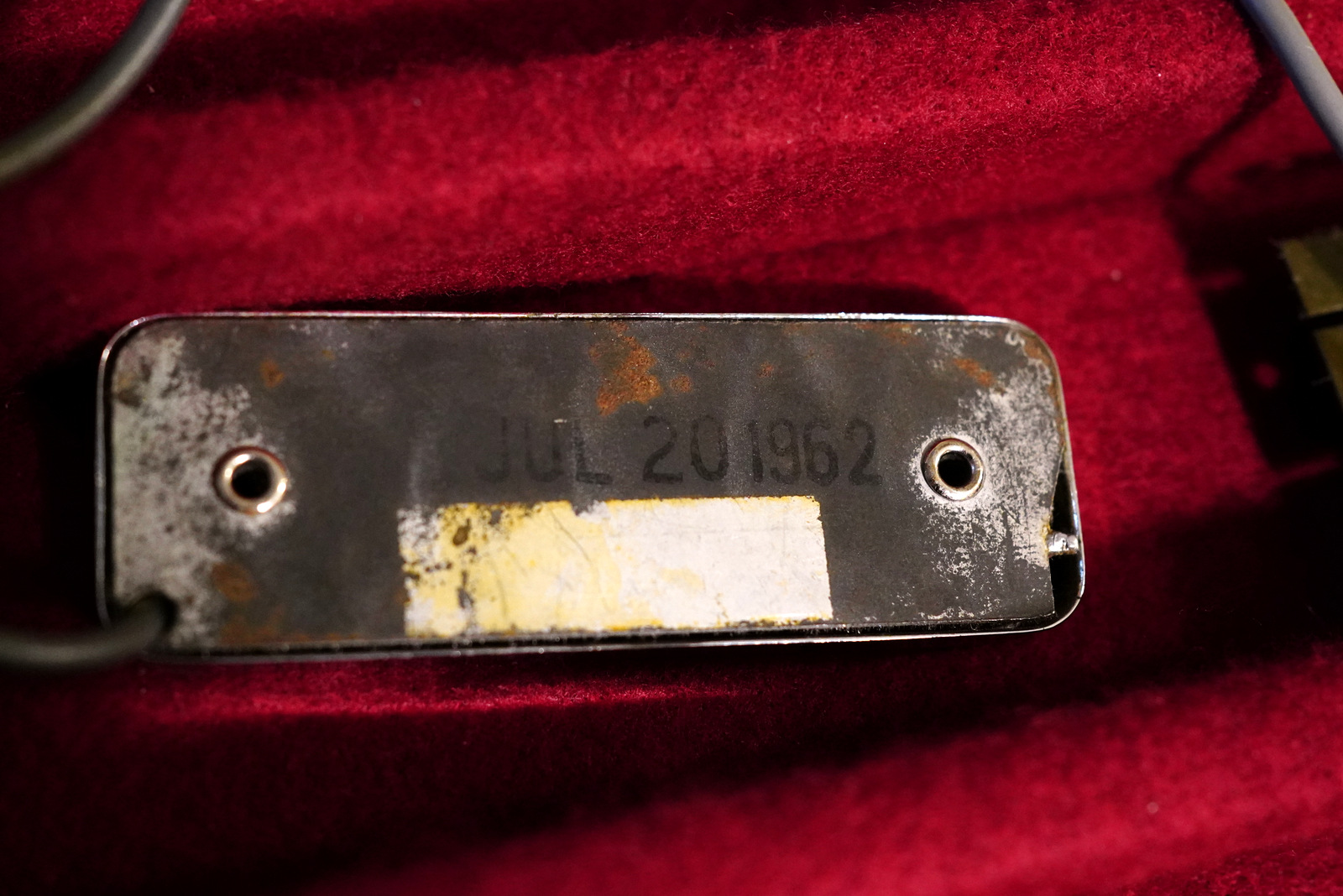
My vintage guitar pickups treasure vault-the story of the gold foil pickups!
While I’m waiting impatiently to upload some killer demos of the new Electric Poet and the new Underdog (and finally adding these models to the new 2023 collection), I’ve decided to add some new great-sounding pickups to the current line.
Besides the 50’s style lipstick single coils and the Listick humbuckers I make, a few more pickups have put their sonic spell on me, not because of a technical prowess or ingenious design, but simply because of their magical tone.
For example, I’ve always loved the Teisco gold foil, especially the ones with the ceramic magnets or the Hershey Bar pickups that were used for some of my favorite 50 catalog guitars, such as the Silvertone 1420 and the Harmony Stratotone, and the trouble was that I couldn’t find a modern boutique guitar pickups builders that sounded as musical and sweet as the original ones among the various modern recreations.
A Teisco and Harmony gold foils from the 1960s





